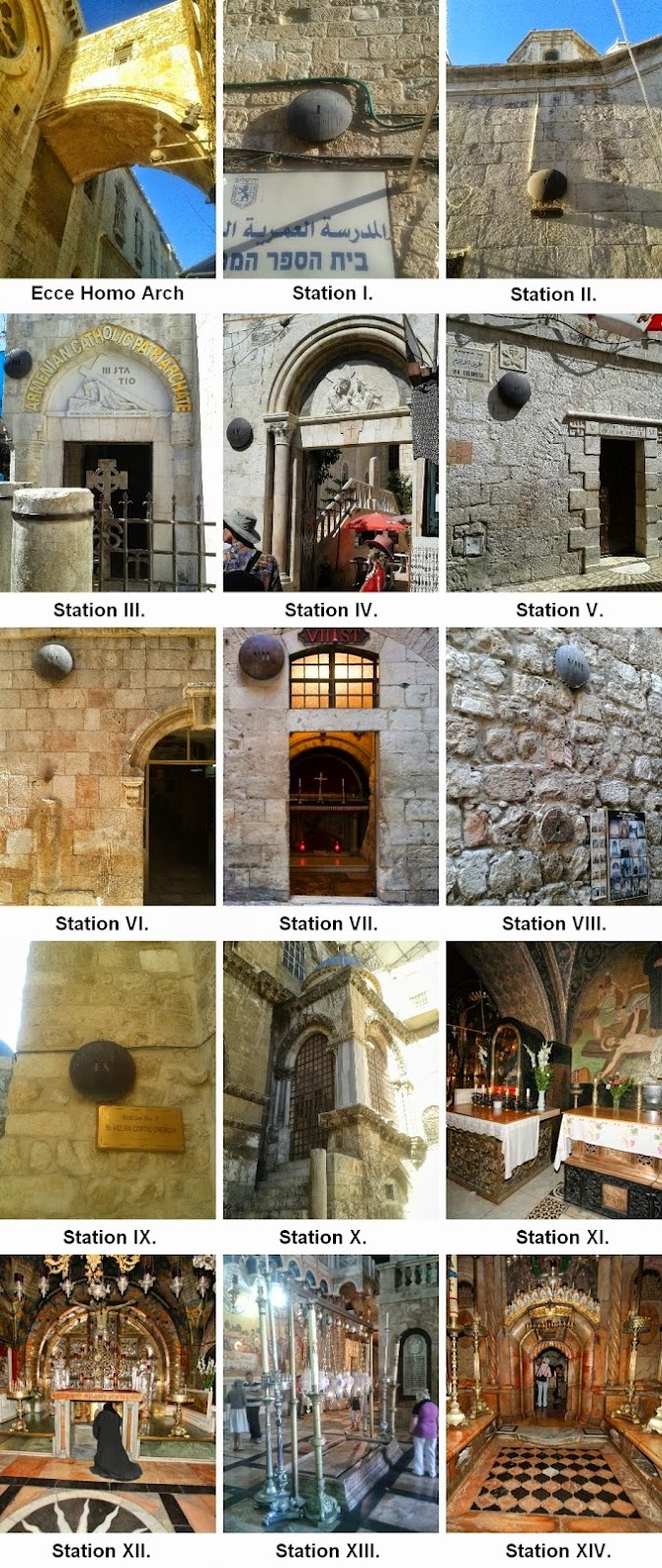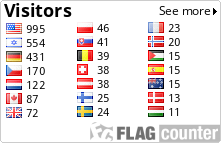The Via Dolorosa is a street, in two parts, within the Old City of Jerusalem, held to be the path that Jesus walked, carrying his cross, on the way to his crucifixion. The current route has been established since the 18th century, replacing various earlier versions. It is today marked by nine Stations of the Cross; there have been fourteen stations since the late 15th century, with the remaining five stations being inside the Church of the Holy Sepulchre.
The Via Dolorosa is the modern remnant of one of the two main east-west routes (Decumanus Maximus) through Aelia Capitolina, as built by Hadrian. Standard Roman city design places the main east-west road through the middle of the city, but the presence of the Temple Mount in the middle of this position required Hadrian's planners to add an extra east-west road at its north. In addition to the usual central north-south road (cardo), which in Jerusalem headed straight up the western hill, a second major north-south road was added down the line of the Tyropoeon Valley; these two cardines converge near the Damascus Gate, close to the Via Dolorosa. If the Via Dolorosa had continued west in a straight line across the two routes, it would have formed a triangular block too narrow to construct standard buildings; the decumanus (now the Via Dolorosa) west of the Cardo was constructed south of its eastern portion, creating the discontinuity in the road still present today.
The first reports of a pilgrimage route corresponding to the Biblical events dates from the Byzantine era; during that time, a Holy Thursday procession started from the top of the Mount of Olives, stopped in Gethsemane, entered the Old City at the Lions' Gate, and followed approximately the current route to the Church of the Holy Sepulchre; however, there were no actual stops during the route along the Via Dolorosa itself. By the 8th century, however, the route went via the western hill instead; starting at Gethsemene, it continued to the alleged House of Caiaphas on Mount Zion, then to Hagia Sophia (viewed as the site of the Praetorium), and finally to the Church of the Holy Sepulchre.
During the Middle Ages, the Roman Catholics of Jerusalem split into two factions, one controlling the churches on the western hill, the other the churches on the eastern hill; they each supported the route which took pilgrims past the churches the faction in question controlled, one arguing that the Roman Governor's mansion (Praetorium) was on Mount Zion (where they had churches), the other that it was near the Antonia Fortress (where they had churches).
In fourteenth century, Pope Clement VI achieved some consistency in route with the Bull, "Nuper Carissimae," establishing the Franciscan Custody of the Holy Land, and charging the friars with "the guidance, instruction, and care of Latin pilgrims as well as with the guardianship, maintenance, defense and rituals of the Catholic shrines of the Holy Land." Beginning around 1350, Franciscan friars conducted official tours of the Via Dolorosa, from the Holy Sepulchre to the House of Pilate - opposite the direction traveled by Christ in Bible. The route was not reversed until c. 1517 when the Franciscans began to follow the events of Christ’s Passion chronologically - setting out from the House of Pilate and ending with the crucifixion at Golgotha.
From the onset of Franciscan administration, the development of the Via Dolorosa was intimately linked to devotional practices in Europe. The Friars Minor were ardent proponents of devotional meditation as a means to access and understand the Passion. The hours and guides they produced, such as Meditaciones vite Christi (MVC), were widely circulated in Europe.
Necessarily, such devotional literature expanded on the terse accounts of the Via Dolorosa in the Bible; the period of time between just after Christ’s condemnation by Pilate and just before his crucifixion receives no more than a few verses in the four Gospels. Throughout the fourteenth century, a number of events, marked by stations on the Via Dolorosa, emerged in devotional literature and on the physical site in Jerusalem.
The first stations to appear in pilgrimage accounts were the Encounter with Simon of Cyrene and the Daughters of Jerusalem. These were followed by a host of other, more or less ephemeral, stations, such as the House of Veronica, the House of Simon the Pharisee, the House of the Evil Rich Man Who Would Not Give Alms to the Poor, and the House of Herod. In his book, The Stations of the Cross, Herbert Thurston notes: "…Whether we look to the sites which, according to the testimony of travelers, were held in honor in Jerusalem itself, or whether we look to the imitation pilgrimages which were carved in stone or set down in books for the devotion of the faithful at home, we must recognize that there was a complete want of any sort of uniformity in the enumeration of the Stations."
This negotiation of stations, between the European imagination and the physical site would continue for the next six centuries. Only in the 19th century was there general accord on the position of the first, fourth, fifth, and eighth stations. Ironically, archaeological discoveries in the 20th century now indicate that the early route of the Via Dolorosa on the Western hill was actually a more realistic path.
The equation of the present Via Dolorosa with the biblical route is based on the assumption that the Praetorium was adjacent to the Antonia Fortress. However, like Philo, the late-first-century writer Josephus testifies that the Roman governors of Roman Judaea, who governed from Caesarea Maritima on the coast, stayed in Herod's palace while they were in Jerusalem, carried out their judgements on the pavement immediately outside it, and had those found guilty flogged there; Josephus indicates that Herod's palace is on the western hill, and it has recently (2001) been rediscovered under a corner of the Jaffa Gate citadel. Furthermore, it is now confirmed by archaeology that prior to Hadrian's 2nd-century alterations, the area adjacent to the Antonia Fortress was a large open-air pool of water.
In 2009, Israeli archaeologist Shimon Gibson found the remains of a large paved courtyard south of the Jaffa Gate between two fortification walls with an outer gate and an inner one leading to a barracks. The courtyard contained a raised platform of around 2 square metres (22 sq ft). A survey of the ruins of the Praetorium, long thought to be the Roman barracks, indicated it was no more than a watchtower. These findings together "correspond perfectly" with the route as described in the Gospels and matched details found in other ancient writings.
The route traced by Gibson begins in a parking lot in the Armenian Quarter, then passes the Ottoman walls of the Old City next to the Tower of David near the Jaffa Gate before turning towards the Church of the Holy Sepulcher. The new research also indicates the crucifixion site is around 20 metres (66 ft) from the traditionally accepted site.
Read more about Via Dolorosa in Wikipedia
What to see in Via Dolorosa?
GPS satellite reception is not good in some places in the old city also recommended to use a map.
The cache is available at all times, but the churches and chapels are usually open from 8:00 till 17:00 hours.
To find the cache:
One of the stations is near a T intersection. Follow the wall to the left of the station and you will see at the corner five painted digits in black. They are,
ABC
D+E
Then go to:
N 31° 46.DE[A+3]
E 35° 13.BE[C-4]

